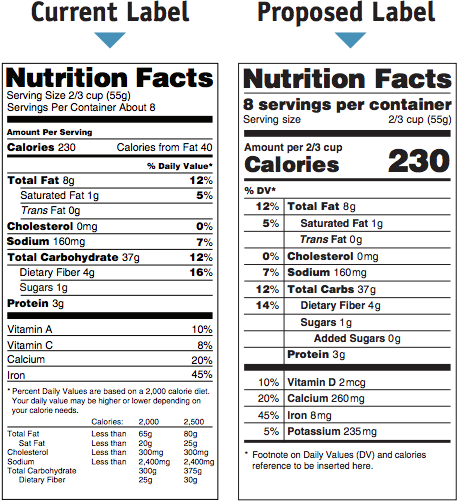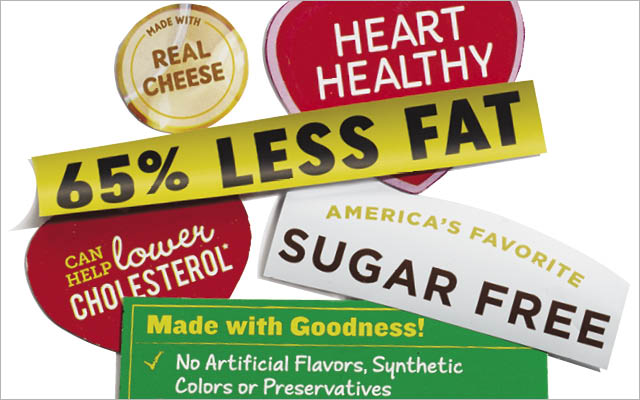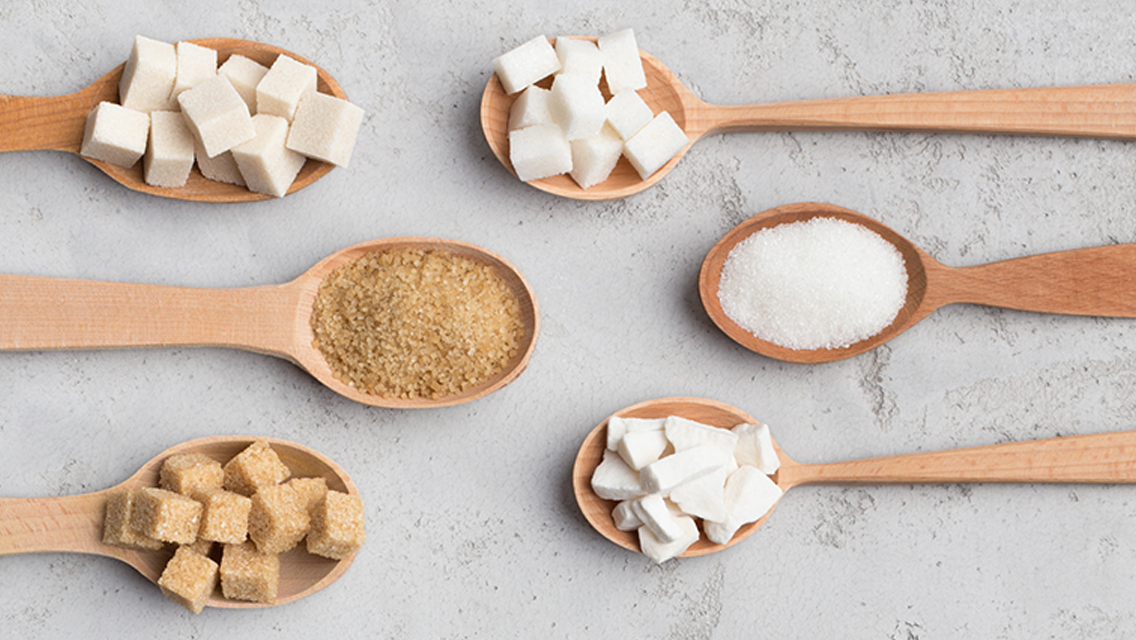Any parent who’s ever squared off with their kids in the cereal aisle knows that children and grocery stores don’t always mix. Your kids beg endlessly for foods you don’t want them to eat, and you expend a lot of energy fending off their requests. The key to minimizing such conflicts, many experts say, is arming your children with the nutritional know-how to read and interpret food labels on their own. (For related tips, see “Feed Your Family Healthy.”)
“If you teach your kids how to read a food label, you’ll equip them to make their own smarter choices about what to eat,” says Christine Wood, MD, author of How to Get Kids to Eat Great and Love It!.
Easier said than done, say most parents. The FDA-mandated nutrition labels may be a powerful tool, but too few of us know how to make sense of them, much less explain them to our kids. Even so, by getting smarter about what the labels reveal or fail to disclose, we can create a better basis for our own food decisions. We can also empower kids to be more discerning food consumers, protect them against aggressive and deceptive marketing ploys, and provide a more objective framework for the food choices we make as a family.
Start Small
Start by focusing on a few things at a time, suggests Mary Lou Gavin, MD, medical editor at KidsHealth.org. “It can be intimidating – for all of us – to try and size up a food label as a whole, so you need to break it down.”
That means starting with the simple things, and with a healthy food attitude – one that is more about going after good nutrition than it is about “cutting calories” or making whole classes of foods off limits. You might begin by encouraging your kids to get friendly with a variety of whole foods, like fruits and vegetables, that are so pure and so healthy they don’t even require labels. Then explain why, as a family, you strive to avoid processed products that contain certain troublesome ingredients – like hydrogenated oils, high-fructose corn syrup, refined flours, monosodium glutamate (MSG) – or any ingredients a member of the family is allergic or sensitive to.
Even younger kids with basic reading skills can learn to identify the “ingredients” section of a food package (generally at the bottom of the nutrition facts label) and to sleuth out “no go” ingredients. Once your kids have mastered that, you can begin introducing them to the more complex parts of the nutrition facts label.
Most experts suggest starting at the top of the label, with “serving size” and “servings per container.”
“Everything else is negated when we don’t understand serving size, particularly when we are talking about calories and fats in processed foods versus nutritious foods like fruits and veggies,” Gavin explains. “Kids will look at a label and say, ‘Oh, this has only 200 calories in it,’ but they might eat the entire package – which has, say, three servings in it.”
Worse, notes Gavin, in the case of some snack foods, those three servings may deliver very little nutritional value. “We really need to highlight to kids that if they’re going to have a big portion of food, they need to pay attention to how many actual serving sizes that portion represents, and what they are getting out of it.”
Using math lessons can keep it fun, says Wood. For example, if kids are going to eat an entire package of something that has two servings, teach them that they need to double all of the nutritional figures that follow.
Conversely, just because a cookie-package label says a single serving consists of three cookies doesn’t mean a small child should necessarily eat three cookies.
Inform, Don’t Obsess
When helping your kid parse the next few lines of information on calories and fats, avoid creating an impression that these things are inherently “bad.” Instead, take time to explain that calories from healthy foods build energy and vitality, and that some healthy foods (like seeds, nuts and fish) contain rich stores of good fats that help kids grow up healthy and strong.
Explain that the goal is to fuel energy needs with calories from healthy, whole foods that do our body good – and to avoid empty and excessive calories that burden our bodies without benefit.
Some experts, like Wood, suggest offering your kids basic fat-limit guidelines – for example, that not more than 30 percent of a product’s calories should come from fat – in order to keep them away from fatty snacks. But ultimately, she and other experts agree, you want your kid to think more about the character, quality and nutritional value of foods, and less about the minutiae of fat, calorie and carb percentages.
“It’s also great to talk to kids about food in terms of how they feel when they eat it,” says Wood. “So, for example, I like to talk about how protein will give you stable energy or about how fiber will help you go to the bathroom every day.” You might also explain how healthy carbs, fats and proteins – plus phytonutrients (not listed on the label, but present in all plant foods) – can help kids build strong bodies and sharp minds and help keep illnesses at bay.
Of course, you want your kids to pay at least some attention to what Marion Nestle, PhD, MPH, author of What to Eat: An Aisle-by-Aisle Guide to Savvy Food Choices and Good Eating (North Point Press, 2006), calls the “eat less” nutrients – namely, saturated and trans fats, cholesterol, and sodium. And as kids get older, you also want them to begin noticing the distribution of fats, carbs and proteins; foods containing gobs of added sugar (see Web Extra! below); and so forth. But if you get kids too bogged down in complex formulas and technical details too early, you’re likely to lose their interest.
A better approach: Wait until they start asking for more detail, then explore the finer points of nutrition together.
One technical detail you do want to remember, says Wood, is that an FDA loophole allows the manufacturer of products containing less than 0.5 grams of trans fat per serving to list the amount as “zero.” The lesson here? “Teach your kids to scan the ingredients list for the phrase ‘partially hydrogenated’ [which indicates the presence of trans fats],” she advises – no matter what the package front says.
Investigative Skills
Building your kids’ label-reading skills through word-finding and other games makes the process more fun for both of you. While shopping, you might offer a reward for the first food request that doesn’t contain off-limits ingredients – or for the “most horrible food find” that contains all of them. Have your kids sleuth for the most unrealistic portion sizes, food products with less than 10 grams of sugar, and so on.
Gavin employed this sort of “scavenger hunt” strategy when she needed to teach a “Food Power” badge to her daughter’s Girl Scouts troop. “I came up with a list that asked the girls to find something, for example, that had high-fructose corn syrup in it and something that had high fiber and so on,” Gavin says. “I did it with 20 girls running around my house, but you can do it with your own child in a grocery-store aisle.”
By turning the label-reading lesson into a form of play, you can alert your kids to the types of products that are most problematic, explain why they’re unhealthy, and look for healthier alternatives together. “It opens up really good conversation on nutrition in a fun way,” says Gavin.
Making It Meaningful
The next block of information on the food label is what Nestle calls the “eat more” nutrients, such as dietary fiber, vitamins A and C, calcium, and iron. A simple glance at this block of numbers can help a kid assess whether a product packs any kind of nutritional punch, says Gavin. “If you are looking at the good stuff and the numbers are basically all zeros,” she notes, “then it’s not a good food to eat.”
Here again, though, looks can be deceiving. Today, many highly processed foods are “enriched” with added vitamins and minerals, but it’s not clear that such nutrients are as readily absorbed or as valuable as naturally occurring ones. When in doubt, keep going back to the ingredients list. If you don’t like what you see, let your kid know that this is one of those “tricky labels” that promises more than it can deliver.
And again, while it’s important for your kids to know how to interpret a food label, “it’s just as important,” says Kathie Swift, MS, RD, “to teach them that the very best, most honest foods – like fruits, vegetables, legumes, whole grains, nuts and seeds – may have no labels at all.”
“Ideally, the products with labels on them should take up the least room in our shopping cart,” she notes. It may take you a while to get there, of course. Then again, with your label-reading kids helping out, it may be easier than you think.
Nutrition Facts 101
A. Check to see the size of a single serving size, and if it’s realistic. All the calories, grams and percentages listed are for a single serving, and some manufacturers list misleadingly small serving sizes (and high servings per container) in order to keep calorie, fat and sugar-gram quantities artificially low. If your kids eat two cups of this cereal, not one, they’ll be getting twice as much of everything as the label indicates.
B. Calories are mostly a concern when they’re empty (meaning they don’t deliver good nutrition) or when kids are likely to overindulge. Don’t scare your kids off healthy foods that are high in calories, but good for them in moderation (like nut butters). Keep them focused on high-quality ingredients instead.
C. Again, worry less about total fat than about whether the sources of fat are healthy. Fats from nuts, seeds, avocados, fish and olive oil help stabilize energy, satisfy hunger and may build healthy brain function. Fried foods and foods full of highly processed oils and fatty meats do not.
D. No trans fat? Not necessarily. If the product contains 0.5 grams or less, manufacturers can list it as zero percent. To be sure, scan the ingredients list for “hydrogenated” or “partially hydrogenated” oils.
E. How much sugar is OK? It depends on whether the sugars are naturally occurring and whether they are offset by enough fiber. Check out the ingredients list to get the whole story. Avoid products in which sugars and sugar syrups are among the top few ingredients. When added sugars are present, choose products that contain no more than 10 grams per 1-ounce serving, and have at least 5 grams of fiber and 5 grams of protein.
F. The nutrient breakdown gives you a very basic idea of a product’s nutritional value, so you don’t want to see all zeros here. But remember that “enriched” foods may contain added nutrients that aren’t necessarily as accessible as the natural nutrients found in whole foods. The ingredients list tells the more complete story.
Label-Learning Essentials
Tired of food companies relentlessly targeting your kids? Teach them how to read a nutritional label and think for themselves. Try these tips:
- Ignore packaging come-ons. “If you teach your kids to realize that most claims are there just to do one thing – sell food – then you can outsmart the marketers,” says Kimberly Lord Stewart, author of Eating Between the Lines: The Supermarket Shopper’s Guide to the Truth Behind Food Labels (St. Martin’s Griffin, 2007).
- Follow the 5-gram rule. Beware of nutrient-empty food. Try to find cereals and snacks that have at least 5 grams each of fiber and protein and no more than 5 to 10 grams of sugar.
- Play word watch. Teach your children to scan ingredients lists for trans fats like “partially hydrogenated” oils, as well as added sugars and sugar syrups (like high-fructose corn syrup) that are listed up high (ingredients are listed in order of quantity). Other ingredients to watch for include artificial sweeteners, artificial colors, refined white or wheat “enriched” flours, and monosodium glutamate (a flavor-enhancing excitotoxin).
- Use fun visuals to make your point. Stewart spoons 10 teaspoons of sugar into a glass to illustrate what the 40 grams of sugar in most soda looks like. (To calculate how many teaspoons of sugar are in a serving of any food, simply take the grams of sugars listed and divide by four.)
- Shop and cook with your kids. Teach them to shop the perimeter of the store. Show them that whole (label-less!) foods like fruits, veggies, legumes, nuts and seeds are some of the healthiest and best foods we can eat. Help kids understand where foods come from, and how they contribute to the health of their muscles, skin, bones, eyes, brain function, energy, moods, and so on.
- Have faith. “Sooner or later, your kids will have an aha! moment” about nutrition, says Mary Lou Gavin, MD, medical editor for KidsHealth.org. In the meantime, be patient and keep trying.
WEBEXTRA!
The Sugar Question
Most parents would love to help their kids reduce their sugar consumption. Unfortunately, food labels aren’t always as helpful for tracking this ingredient as they are for others.
“One of the problems with the food label is that ‘sugars’ refers to both natural sugars and added sugars,” says Christine Wood, MD, author of How to Get Kids to Eat Great and Love It! (KidsEatGreat, Inc., 2006). “I sometimes find it more valuable to look at the ingredients list than to see how many grams of sugar there are.”
When investigating the ingredients list, kids should not only look at how high sugar is listed (the higher up something appears, the more of a primary component it is), but also what kind of sugars the product contains. For example, explains Wood, “if you see something like high-fructose corn syrup listed at the top of the list, then you know the product has a lot of added sugar. However, if you are looking at plain yogurt and it has its own sugars, but not any added sugar, then that’s a good sign.” As much as possible, many experts say, induce your kids to pick products that have naturally occurring sugars over added ones.
Other names to watch for on the ingredients list are sucrose, fructose, corn syrup, maltose, dextrose, fruit juice concentrate, and even honey and maple syrup: “These are sugars, too, but some are just not as processed,” Wood says.
Drinking sugar is one of the easiest ways to overdo it. Parents can teach their kids to beware liquid sugar from soda, juice and energy drinks, which, when consumed in excess, can contribute not only to tooth decay, but to obesity, mood swings, type 2 diabetes and poor bone density. Another source of sugar to limit is processed carbohydrates, such as white bread, most breakfast cereals, French fries and many snacks. These food sources are quickly converted to sugar in the body, are full of empty calories and don’t satisfy hunger.
When deciding how much sugar per serving is OK, Kimberly Lord Stewart, author of Eating Between the Lines: The Supermarket Shopper’s Guide to the Truth Behind Food Labels (St. Martin’s Griffin, 2007), goes by the “5-gram rule.” Parents and kids should choose products that contain between 5 and 10 grams of sugar per 1-ounce serving, plus at least 5 grams of fiber and 5 grams of protein. “Ideally, 5 grams of sugar is best, but sometimes that’s a little hard to find,” she says.
Looking for better ways to add sweetness appeal? Try sprinkling some fresh or dried fruit, or adding a little pure maple syrup to unsweetened cereal. Instead of buying commercial puddings, many of which are a mixture of sugar, oil and milk, try treating yourself and your kids to high-quality, full-fat yogurts, which taste creamier and sweeter. And, instead of always relying on sugar to sweeten up baked goods or other dishes, some experts suggest substituting sweet-but-not-sugary spices like nutmeg, cinnamon and pure vanilla extract.
Most kids will crave sugar from time to time, and it’s helpful to realize that all sugary snacks are not created equal. For example, ice cream contains sugar, but in contrast to the pure sugar hit of a soda, it also contains fat and protein, both of which help to slow the absorption of carbohydrates and keep blood sugar levels in check.
Of course, this doesn’t mean you should treat your kids to ice cream every day. When it comes to sugar, a good rule of thumb, says Mary Lou Gavin, MD, medical editor at KidsHealth.org, is simply this: “Less is best.”
For more on the sugar conundrum, check out these articles in the Experience Life archives:




This Post Has 0 Comments